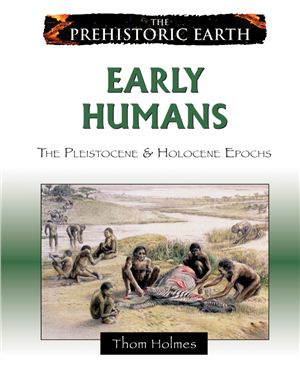Chelsea House Publications, 2008. - 151 pages. Series "The
Prehistoric Earth".
The human species is relatively new to the planet in geologic terms. With origins reaching back only a few million years, the rise of humans from primate ancestors is a remarkable evolutionary success story. "Early Humans" traces the beginnings of the human species, its success and adaptability, and the development of such innovations as human language and culture. In exploring human origins, provocative questions arise conceing the human species: how are we different from each other, is there a biological basis for race, and what does the future hold for human evolution?
The human species is relatively new to the planet in geologic terms. With origins reaching back only a few million years, the rise of humans from primate ancestors is a remarkable evolutionary success story. "Early Humans" traces the beginnings of the human species, its success and adaptability, and the development of such innovations as human language and culture. In exploring human origins, provocative questions arise conceing the human species: how are we different from each other, is there a biological basis for race, and what does the future hold for human evolution?

